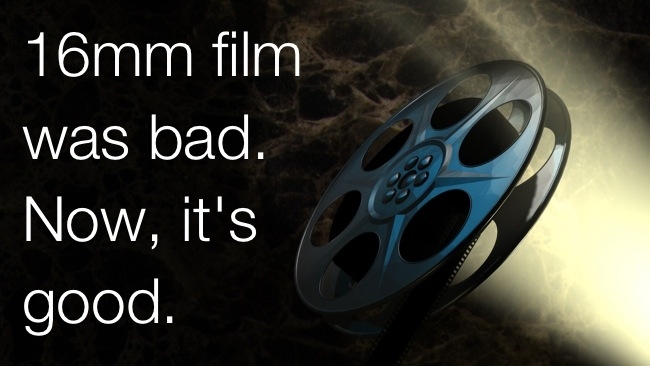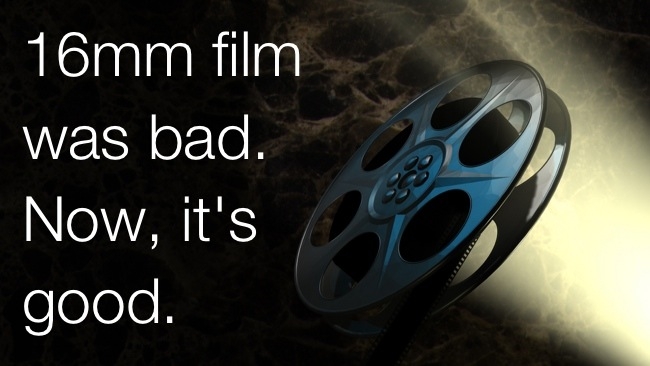
 16mm film is now OK for HD
16mm film is now OK for HD
16mm film, used for almost all TV production in the UK before HD, wasn't considered good enough for digital HD broadcast. But now it is. What's changed? Hint: It's not 16mm film
A few years ago, to almost (but not quite) universal dismay, an organisation called the Digital Production Partnership infamously decreed that “Super 16 is not considered high definition no matter what processing or transfer systems are used”. This effectively ended Super 16 acquisition for the BBC and other UK broadcasters, which might not seem like much of a loss to people used to the American approach where more or less everything is shot on 35mm in any case. However, in the UK, most of the film that has ever been shot for television has been 16mm – I can't, off the top of my head, name any TV series shot on 35mm here for the last many decades. There probably are a few, but not many, so this is a bigger deal than it might seem to those of us who are less used to the cheapness of British TV producers.
Rights and Wrongs
The rights and wrongs of this situation are inevitably wound up in the attachments that some people feel for film, particularly the tendency to write off the speckle caused by the structure of photochemical emulsion as artistry as opposed to noise, which is what it actually is. Now, I'm no stranger to arguments over the fact that broadcasters tend to choose hilariously low bitrates for the encoding of TV channels, which is usually done by realtime MPEG-2 codecs of dubious efficiency, and I'd love to see the number of channels cut by fifty or sixty per cent and the bitrates allocated to each increased accordingly. But that doesn't make film grain any less noise, and that doesn't change the fact that it's more difficult to compress.
Technical Argument
So, unpopular as it is, there genuinely is a technical argument here. It is possible to shoot 16mm that looks good on HD, but it's considerably more difficult, inasmuch as the requirements are considerably more restrictive, than it is to do so on 35mm. Lenses must be of high quality, film stock must be slow and the lighting package accordingly more capable, or the lenses faster. Processing and transfer must be of the highest quality. All of these things are expensive, and it might be reasonable to take the position that while it's possible to shoot 16mm for HD, it might not be a particularly attractive price-to-performance proposition, especially given that 16 is most often chosen over 35 because it's cheaper.
Of course I don't want to imply that the exigencies of making super16 will look its best will inevitably make it just as expensive as 35, but the situation is not as simple as saying that 16mm is always good enough for HD. The truth is that it can be, and it's only fair to say that this may sometimes be difficult to achieve.
Changed Views of the DPP
So, depending on your feelings on all this, you will be either overjoyed or dismayed that the DPP has, frankly, changed its mind for some reason, even though the technical situation hasn't changed. There have always been shrill cries that the tests on which the original decision was based were not done correctly, but then, there were always going to be, given the fact that we're discussing an artform here, and a measure of final picture quality that is always going to be subjective. In any case, the document released (which is available from the DPP at http://www.digitalproductionpartnership.co.uk) more or less restates the concerns that more or less everyone has always had over 16mm for HD: done very properly and carefully it can be fine.
Given their willingness to U-turn on this, you wonder why they didn't make this decision in the first place. It would certainly have saved the world some shouting. But the main feeling this all leaves me with is that it may make precious little real difference. UK producers were not often willing to pay for film before the 16mm-for-HD controversy arose, and I see no reason to think they'll suddenly become more generous now.
Tags: Technology


Comments